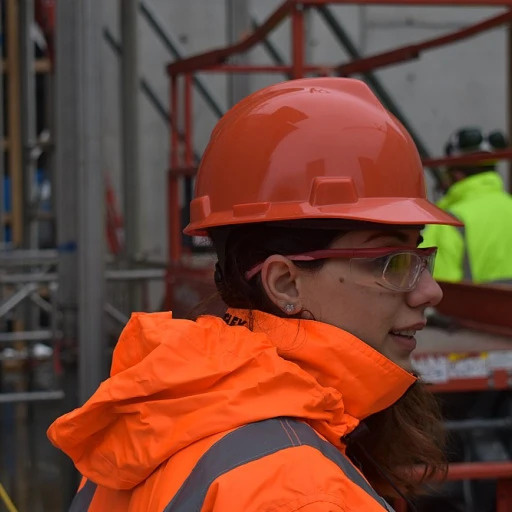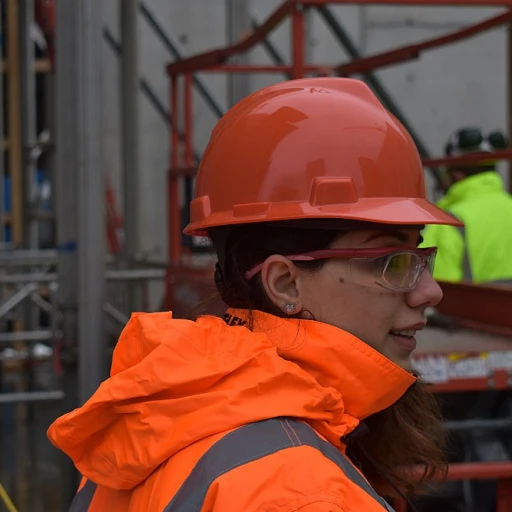-teaser.webp)
Understanding AI in Shift Scheduling
AI's Role in Revolutionizing Shift Scheduling
AI is increasingly making its mark on shift scheduling, especially in the restaurant business where timely and effective workforce management is crucial. AI-driven scheduling software offers advanced features that traditional systems simply can't compete with. By using real-time data and sophisticated algorithms, these systems can better predict scheduling needs, ensuring that labor costs are kept in check while meeting the dynamic demands of the restaurant work environment.
One of the most compelling aspects of AI in shift scheduling is its ability to process large volumes of data swiftly, allowing for adaptation to changing restaurant schedules without the hassle often associated with manual adjustments. The flexibility offered by AI is a game-changer for restaurant managers who need to balance employee availability and labor cost while optimizing shifts. Thanks to such systems, managing and adjusting team schedules become less time-consuming for restaurant staff.
Incorporating AI into your restaurant's employee scheduling not only helps in managing labor efficiently but also improves team communication and work-life balance for your employees. With AI-driven shift planning, there is potential for reducing employee turnover and increasing satisfaction simply by respecting employee time requests and preferences.
Moreover, features like shift swapping, mobile app integration, and time tracking ensure that all aspects of restaurant labor management are handled with precision. Some solutions even offer a free trial, making them accessible for restaurants looking to optimize their staff scheduling process without incurring immediate costs. In the extensive world of workforce management, leveraging AI can significantly elevate the best restaurant operations to the next level. For further insights into the impact of data on workforce planning, integrating AI-driven solutions might be something to explore through these enhancements in workforce optimization.
Challenges in Traditional Restaurant Scheduling
Addressing Traditional Scheduling Limitations
In the restaurant industry, traditional scheduling methods have long been plagued by challenges that affect both management and staff. Paper-based schedules or basic electronic calendars often lead to inefficiencies and miscommunication. Firstly, the time spent on manual scheduling can be extensive. Managers juggle multiple factors, including employee availability, staffing needs during peak hours, and compliance with labor laws. This can often result in scheduling time-consuming tasks that eat into valuable management hours. Another issue is the high potential for errors that come with juggling multiple schedules. Mistakes in shift assignments can lead to overstaffing or understaffing, which in turn affects labor costs and restaurant employee morale. It's always a balancing act in workforce management, where precision is crucial to maintain smooth operations without incurring unnecessary expenses. Moreover, employees often face restrictions when it comes to flexibility. The inability to swap shifts easily with their team can lead to increased stress and decreased job satisfaction. Traditional methods provide limited options for employee scheduling, hindering staff from managing personal or unplanned events efficiently. Communication is another pain point. Traditional scheduling tools do not facilitate real-time staff communication, making it challenging for employees to communicate shift swaps, time requests, or find quick replacements. This often results in last-minute alterations that disrupt the usual flow of work. Traditional restaurant scheduling lacks the ability to provide comprehensive insights to aid strategic decision-making. Without data-driven insights, managing labor costs and optimizing restaurant schedules become daunting tasks for any restaurant management team. For restaurants aiming to embrace best practices in workforce management, recognizing these limitations is the first step towards improvement. With the advent of advanced solutions like AI-driven scheduling software, there's potential to overcome these inefficiencies and enhance overall restaurant operations effectively. Learn more about how modern solutions can optimize workforce planning by checking out insights on optimizing workforce planning with driven brands workday.Benefits of AI-Driven Scheduling for Restaurants
Maximizing Efficiency and Employee Satisfaction with AI Scheduling
AI-driven scheduling solutions bring profound benefits to restaurants, enhancing both operational efficiency and employee satisfaction. Traditional methods often grapple with the complexity of juggling employee availability, labor costs, and fluctuating demand. However, AI scheduling transforms how teams manage shifts with innovative features.- Cost Efficiency: By integrating advanced scheduling software, restaurants can optimize labor costs. AI analyzes patterns, ensuring appropriate staffing levels and mitigating overstaffing, a crucial step in managing the budget effectively.
- Real-Time Management: AI provides real-time updates, allowing managers to adjust schedules swiftly in response to emergencies or staff shortages. This flexibility is vital for maintaining smooth operations without compromising customer service.
- Employee Satisfaction: With AI handling time tracking and shift swapping, employees enjoy more predictable schedules and better work-life balance. Automated processes reduce scheduling conflicts, while features like a mobile app facilitate seamless team communication and handling of time requests.
- Enhanced Planning: Leveraging data insights, AI scheduling improves shift planning to align with business peaks, ensuring readiness during high traffic periods. This strategic approach helps retain the best restaurant employees by fostering a supportive work environment.
- User-Friendly Features: Restaurants can utilize user-friendly interfaces and free trial options to identify the best scheduling solutions tailored to their needs. Features may include employee scheduling templates, shift swapping capabilities, and buddy punch functionalities.
Implementing AI Scheduling in Your Restaurant
Practical Steps to Implement AI Scheduling in Your Restaurant
Adopting AI-driven shift scheduling can revolutionize restaurant operations by enhancing efficiency and reducing labor costs. Here are key steps to effectively implement AI scheduling software in your restaurant:
- Assess Your Needs: Evaluate your current scheduling and workforce management processes. Identify pain points such as employee dissatisfaction with shift swaps or inaccuracies in time tracking that AI tools can address.
- Select the Right Software: Not all scheduling solutions are created equal. Look for AI scheduling software that offers features like real-time tracking, employee time requests, shift swapping capabilities, and team communication tools. A free trial period can help in assessing the features that best suit your needs.
- Training and Engagement: Ensure your staff is comfortable with the new system. Conduct training sessions to help them understand how to use the mobile app for shift planning and real-time schedule updates. Engaged employees are more likely to embrace changes and provide valuable feedback.
- Integrate with Existing Systems: Ensure that the new AI system can seamlessly integrate with your existing workforce management and point-of-sale systems. A smooth integration minimizes disruptions and leverages data across platforms to enhance decision-making.
- Continuous Monitoring and Feedback: Regularly review scheduling efficiencies and labor cost reductions post-implementation. Encourage feedback from staff to improve the system continually and address any ongoing challenges.
Effectively implementing AI-driven scheduling software not only optimizes labor costs but also enhances the employee experience. As the technology evolves, stay updated with the latest trends to ensure your restaurant remains at the forefront of operational excellence.
Case Studies: Success Stories
Real-World Success with AI in Restaurant Scheduling
In the bustling world of restaurants, efficient workforce management is crucial to maintaining both productivity and customer satisfaction. By implementing AI-driven employee scheduling software, several restaurants have not only improved their operations but also driven down labor costs. Below, we examine a few case studies that highlight the tangible benefits these restaurants have experienced.- Streamlined Scheduling Processes: A top-tier bustling eatery adopted an AI-powered scheduling platform, witnessing a transformation in their scheduling time. The software’s ability to automatically generate optimal shift patterns for their team significantly reduced time spent on manual scheduling tasks. Staff schedules became more precise and aligned with peak operational hours, cutting down on unnecessary labor costs.
- Improved Employee Satisfaction: Another restaurant trialed the software's shift-swapping feature with their restaurant employees. This feature facilitated more flexible time requests, empowering staff to manage work-life balance better. As a result, employee satisfaction soared, and turnover rates dropped, saving the restaurant on recruitment costs.
- Efficiency Through Real-Time Updates: With mobile app integration, a renowned restaurant was able to provide real-time updates to their team across various departments. This innovation improved team communication and ensured any scheduling conflicts were addressed promptly, further enhancing workforce management efficiency.
- Reduced Costs with Predictive Analysis: Utilizing predictive analytics offered by AI scheduling systems helped a chain of restaurants accurately forecast demand and efficiently allocate staff accordingly. This strategic employee scheduling reduced overstaffing and minimized overtime scenarios, leading to considerable labor cost savings.
Future Trends in AI and Workforce Planning
Emerging Innovations in AI-Driven Workforce Planning
In the evolving world of workforce management, particularly within the restaurant sector, leveraging AI for scheduling has opened new horizons. The use of AI-driven systems is not only about current improvements but also about anticipating what the future of restaurant operations will look like.- Advanced Predictive Analytics: Beyond the current capabilities, future AI solutions are likely to incorporate even more sophisticated predictive analytics. This will provide restaurant managers with insights that can help forecast demands, thus optimizing schedules to keep labor costs in check and ensure employees are not overworked.
- Enhanced Employee Experience: As AI technology advances, it is expected to further enhance employee scheduling features. This includes more dynamic shift swapping capabilities and better mobile app integrations that empower staff to manage their schedules more effectively, fostering a happier, more engaged workforce.
- Integration with Real-Time Data: Future AI-driven scheduling software might fully integrate real-time data from multiple sources, such as social media or weather forecasts, to more accurately predict customer influxes and adjust schedules dynamically to align staffing needs with actual demand in real time.
- Better Team Communication: AI is anticipated to play a bigger role in team communication, facilitating direct and transparent communication channels that can help in better handling time requests and buddy punch situations, boosting overall staff morale.














